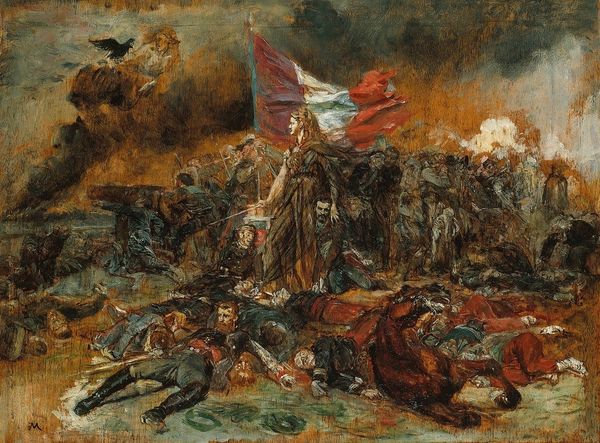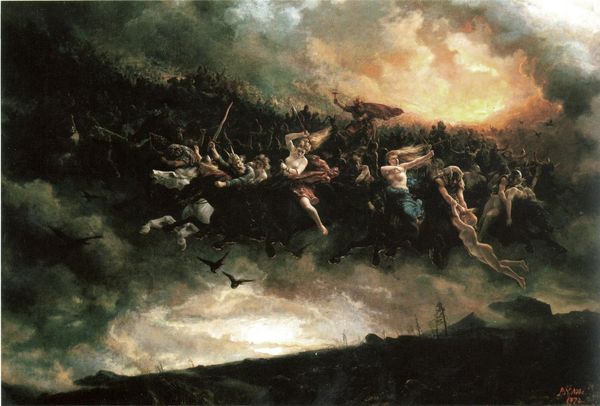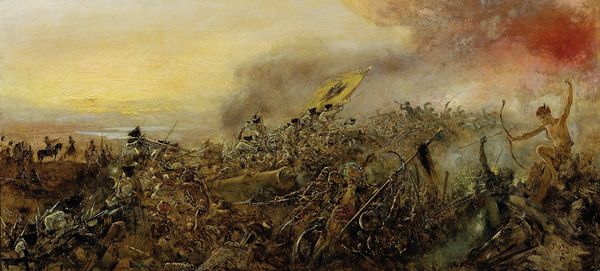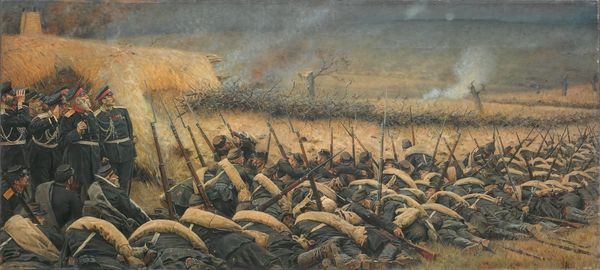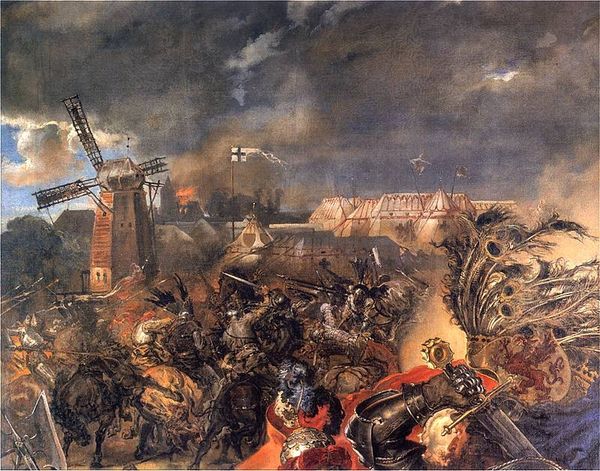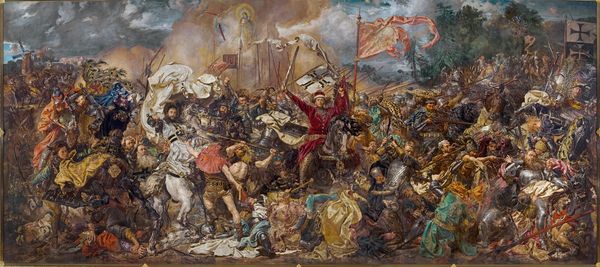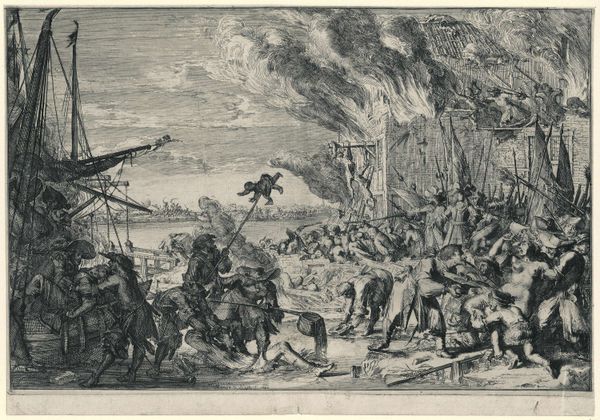
Copyright: Public Domain: Artvee
Curator: Okay, here we have Anton Romako's "Totentanz auf dem Schlachtfeld vor brennenden Ruinen," or "Dance of Death on the Battlefield Before Burning Ruins," painted sometime between 1882 and 1885, rendered in oil. It is a powerful historical painting with an expressive and somewhat romantic style. What are your initial thoughts on it? Editor: My first thought? This is absolutely bonkers. In the best way, of course. The sheer chaos! It looks like some medieval nightmare fueled by absinthe. A dark, gritty canvas populated with ghoulish figures amid the decay, smoke and suggestion of terror. Curator: Yes, "Totentanz" leans heavily into Vanitas traditions with a battlefield of the dead, while the burning ruins emphasize ephemerality. The rough brushstrokes and muted colors deepen the feeling of hopelessness. There are, undeniably, overt nods to expressionism at play here. Editor: Right? It’s as if Romako decided to throw all sense of order and composure out the window. But it is also true to the tradition of art in the expressionist style. The man seems to be channeling the pure, unadulterated terror and insanity of war through these frantic strokes. Like an eye witness of the terror itself. Is that cannon lying forlornly on its side, or do I imagine it so? Curator: Your interpretation isn't far-fetched at all! In iconography, ruins represent both the decay of human achievement and also can denote a reminder of the vanity of worldly goods and aspirations. The scale feels intimate. Do you think the relative diminutiveness impacts the painting? Editor: I do. This scale lends itself to intimacy; there’s this claustrophobic feeling, as if we’re not just observing the Dance of Death, we are trapped right there, stuck in the carnage ourselves, yes? We, like these long gone figures on the canvas, are equally unable to escape our inevitable ends, trapped on some ultimate existential precipice! Curator: An astute observation, I daresay. We’ve seen the theme of “dance of death” surface time and time again across the historical record as a visual manifestation of human mortality, the inexorable and eternal. Romako presents an expressionist's reinterpretation, adding his own sense of the dramatic. Editor: A bleak and brutally brilliant one at that! It is as if Romako dares to force you to confront the bleak nothingness lurking behind the battle! Curator: Indeed! Romako delivers that sentiment with an extraordinary force that stays with you long after you've looked away from it. Editor: Well, I for one am quite haunted! Mission accomplished, I suppose.
Comments
No comments
Be the first to comment and join the conversation on the ultimate creative platform.
